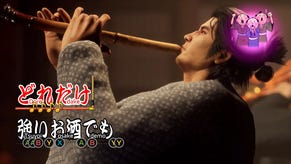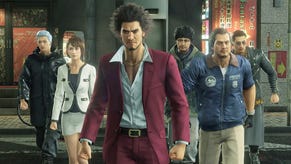Yakuza: Like a Dragon on Xbox Series X - how next-gen hardware delivers a cross-gen experience
A demanding engine gets resolution and frame-rate upgrades.
Yakuza: Like a Dragon has Sega's much-loved series taking to the new generation in style, an Xbox Series X launch title that offers multiple ways to tap into its power. Yes, much like our recent preview of Dirt 5, it seems Series X's lineup so far has a trend towards giving players more ways to play - and that's no bad thing. Developed by Ryu Ga Gotoku Studio, Like a Dragon - also known as Yakuza 7 in Japan - moves to experimental new ground by replacing the usual 3D brawling mechanics with turn-based RPG battling. It's a time for overhaul, and this is the series' most daring reinvention yet. It also lands on Series X with clear boosts over existing consoles: adding 4K support, offering 60fps, and also hastening its loading times. But does it deliver entirely on all counts? And to what extent is this making the most of Series X for launch?
Interestingly, Like a Dragon is already available in Japan for PS4 only, but the upcoming Western release turns to all formats at once - including Xbox Series S, X and PC (though curiously, PS5 is delayed to next year). The preview build we have concentrates on chapter five - some way into the game, but with enough progress to get to know the new cast and the Yokohama setting. The move into RPG territory is a bold one. In truth, the shift from brawler to a turn-based format has turned out to be seamless enough. The engine fundamentals are the same as Yakuza Judgment before it, and so world exploration will be familiar to Yakuza fans, even if the move to turn-based battling adds a layer of strategy we've not seen before. You can assign jobs to each team member, giving every character stat boosts and nerfs, or different abilities. Player positioning factors in during battle too: running past bikes can cue an extra attack. Enemies can interrupt a move, based on location - though direct movement is out of your control.
It's Yakuza broken down and rebuilt, but, crucially it all works; the menus are clearly laid out, and it's a welcome change of pace. In fact, by selecting moves from a skill list, it gives the studio license to really go all in with some of the most over-the-top ideas yet in the series. The city that sets the stage also sees something of a revolution; we see Like a Dragon move to a newly-rendered district of Yokohama for this outing. It makes a welcome leap away from the series' usual focus on Tokyo to lend new leading man Ichiban Kasuga a fresh canvas and obviously, it's a good jumping on point for newcomers to the series.
Arriving on Series S and X this year, the developers have good cause to tap into their existing Dragon Engine, as introduced in Yakuza 6, Judgment and Kiwami 2. Designed from the ground up for PS4, it gives vastly updated animations on characters along with physically based rendering and advanced lighting. The cost of this upgrade came via performance being lowered to 30fps on console: even on PC, the Dragon Engine is challenging to say that least, while PS4 Pro targets 1080p30 and often can't maintain its performance level. Similar to Dirt 5, the studio's answer to the great next-gen question is simple: it's all down to user choice in how that extra horsepower is utilised.
Three modes are on offer: normal, high resolution and high frame-rate. Tackling normal mode first, Series X renders this at native 1440p, with no dynamic resolution scaling. The trade-off for not going for a true native 4K is that everything targets 60fps with full v-sync. Meanwhile, resolution mode aims for a native 3840x2160 but does so with a half-rate refresh, busting down the action to 30fps (with rare frame-pacing issues). Lastly, we have the frame-rate mode; this returns us to a fluid 60fps - though the resolution drops to a native 1080p in this case. The idea is it takes the resolution down even further than the normal mode, in a bid to smooth over some of its performance drops.
Normal mode is the obvious choice for the best experience. There are no visual differences between the three options otherwise, and it ultimately boils down to resolution and frame-rate targets and 1440p60 is a dependable middle ground. The vast majority of gameplay unfolds at 60fps, whether it's city travel, or most of combat - which makes the need to push resolution down to 1080p for a perfect lock almost redundant. It also returns us to where we were with Yakuza 0, albeit combined with all the newer rendering techniques of Judgment. The 1080p frame-rate mode exists for a reason of course; there are occasional drops in the normal mode - always relating to big skill attacks. Expect a few lurches into 50s during alpha-heavy moves, and very rarely much lower. However, on the whole it's not a big distraction given the static, turn-based nature of gameplay. The camera barely moves during the worst of it. All city travel locks to 60fps where it's most obviously enjoyed and I'd pick this mode over the others for that reason. By the way, those hoping for unlocked performance in the frame-rate mode for fully utilising a 120Hz screen will be disappointed - even with the console running in this configuration, frame-rate tops out at 60fps.
In plain text, some of these numbers may seem disappointing - but again, it's important to put it all into context: the Dragon Engine is historically very taxing. The pay-off comes in the actual experience: not how many pixels or frames there are, but in what the engine is actually rendering. The city is filled with crowds and traffic that bow to the rules of physics as you charge through. High quality physically-based materials also give its streets true-to-life lighting. Every item in its shops, clothing and skin, every vehicle - all materials are captured to give consistent results regardless of the condition. This is key: whether it's the indirect lighting beneath shop stands during day, or the specular sheen of its roads at night - there's always a consistency in tone. As with Judgment, the day/night cycle isn't updating in real-time as such: instead it jumps at set intervals, but it always sets the stage for a believable world to explore.
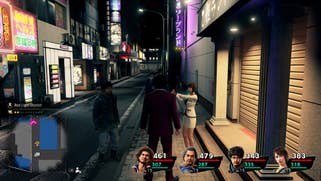
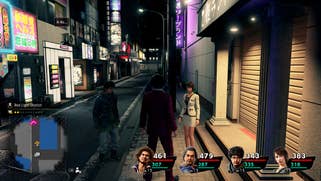
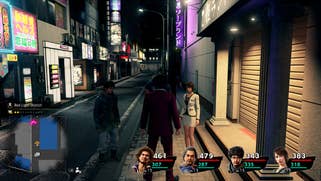
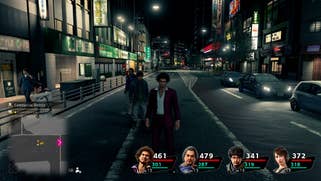
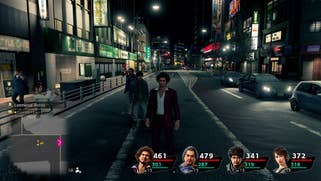
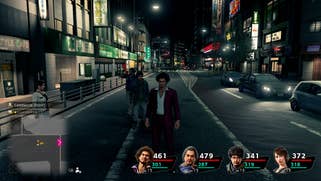
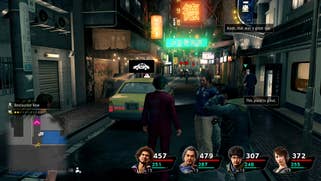

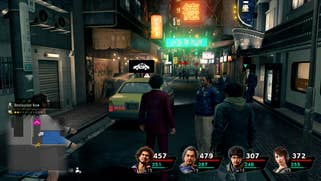

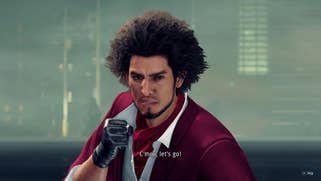

As ever for the series, Like a Dragon's world thrives on the small details. Post effects are striking - the streak of lens flares across city lights, the motion blur of attacks in combat. There are screen-space reflections on puddles and glass windows - so no ray-tracing here, though it blends in well enough. Facial expressions are exceptional as ever; major cutscenes lip-sync well to both English and Japanese voiceovers. Character skin, and even hair quality stand out in their realism - especially for major cast members like Nanba with his full head of curls. And of course, there are the mini-games. Track down any arcade, and you can play full arcade versions of the likes of Virtua Fighter 2 - and potentially more in the full game. In view here, there are cabinets for Fantasy Zone and OutRun in these virtual arcades, though they're not playable in our preview build.
Every corner is filled with something exciting and new, and Like a Dragon lives up to the series reputation for variety. It's a fascinating to see what each new area throws at you. You're even encouraged to run your own business, keeping an eye on its employees, profits, and stock value. The best part is, even zipping around by taxi, loading times are almost instantaneous. Series X's promise is to leverage fast NVMe storage access, and in Yakuza's case it translates to a friction-free experience when hopping between areas of the map. Loading screens flash by within a couple of seconds, barely giving time to see the bar animate. Most of the world can be explored without interruption, in fairness, but Series X helps further remove the down time.
Yakuza Like a Dragon's greatest strength, as with games before it, is in offering you the freedom to explore an authentically realised city. Every corner of the high street, every shop and arcade is full of invention. There's no question this is a PS4-Xbox One era title in spirit - and fundamentally the core game is the same, putting it squarely in cross-gen territory. The twist for the Series X version is, again in the offering of choice. 4K is offered, but the true highlight is the ability to play at 60 frames per second as standard on console. Armed with all the visual advances of recent Yakuza titles, doubling frame-rate counts for a lot in the simple act of navigating the world. Like a Dragon is making a solid first use of Series X hardware - a dipping of the toe for now, let's say, but the upgrades are welcome nonetheless.




